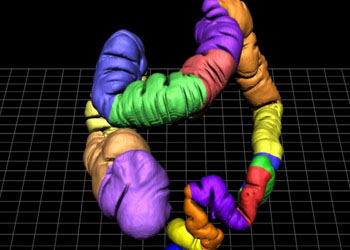Virtual Reality Technologies Can Dramatically Reduce Surgical Planning Times and Increase Accuracy
By HospiMedica International staff writers
Posted on 23 Mar 2016
New virtual-reality technologies that use medical images and data from various sources have the potential to dramatically improve patient outcomes.Posted on 23 Mar 2016
One recent clinical trial carried out by pediatric surgeons at Stanford University Medical Center (SUMC; Stanford, CA, USA), has enabled surgeons and radiologists to develop more accurate surgical plans in 40% less time. The trial also changed the role of the radiologists who became more involved in treatment planning, and prepared data sets for the surgeons. Surgeons in the SUMC trial used a virtual-reality platform developed by EchoPixel (Mountain View, CA, USA). Other trials have also shown that surgical accuracy can be increased by 10%.

Image: 3D virtual reality rendering of organs for surgical planning can dramatically improve patient outcomes (Photo courtesy of iData Research).
The new technologies will enable doctors to interact with 3-D Magnetic Resonance Imaging (MRI) and ultrasound rendered images of an organ. Smart styluses and other hardware can even provide resistance and tactile feedback similar to an actual operation. Virtual reality could be especially useful in medical training, although widespread adoption of such technology will take several more years, as medical professionals are not willing to make abrupt changes in their way of working.
Sandeep Gupta, manager of Biomedical Image Analysis, GE Global Research, said, “VR gives a very immersive way of looking at all this data, which is working to integrate virtual reality into its existing imaging equipment. Doctors may be able to see which brain regions are affected by a neurodegenerative disease, for example, or which neural pathways information and signals are flowing through.”
Related Links:
SUMC
EchoPixel














